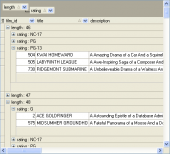Subscribe to our news:

 Partners
 Testimonials
Padster Reynolds: "Good software that has become one of our must have tools - wouldn't like to be without it these days. Keep up the good work".
Christian Novak: "Really good Job! I love this software and will buy it soon! Greetings from Austria".
More
Add your opinion
 Customers
|
SQL Maestro for MySQL online help
Create Database Wizard
To run the Create Database Wizard, select the Database | Create New Database... main menu item or click the Create New Database button on the main toolbar.
See also: Database Editor
|
 Company news 
Mar 21, 2025
New version comes with support for invisible columns, invisible (ignored) indexes, check constraints (MySQL), sequences (MariaDB), a number of password-management capabilities (MySQL) and other features.
May 22, 2017
New version features direct support for a number of MariaDB new features like roles, check constraints and virtual columns; support for roles added in MySQL 8.0, usage statistics for database profile and some other useful things.
May 14, 2015
New version comes with improved support of the latest MySQL versions including generated columns and fulltext indexes. There are also a number of significant interface enhancements.
 Resources
The article puts forward a scenario for implementing row level security in MySQL 5.x.
Find out the way MySQL Maestro can help you to realize the new MySQL 5.1 features in practice. Detailed examples are included.
Get to know all the new features of MySQL 5 (ACID Transactions, Stored Procedures and Functions, Triggers, Views, etc.) and the way MySQL Maestro can help you to use them easily and effectively in practice from our new article. Examples are included.
 Feature of the day
SQL Maestro for MySQL allows you to group data in grids by any table column(s).
SQL Maestro for MySQL: You can view MySQL data as charts with a possibility to export it to an image file.
|
|





 Download
Download Buy
Buy
